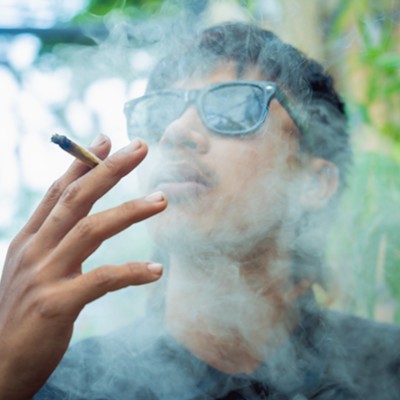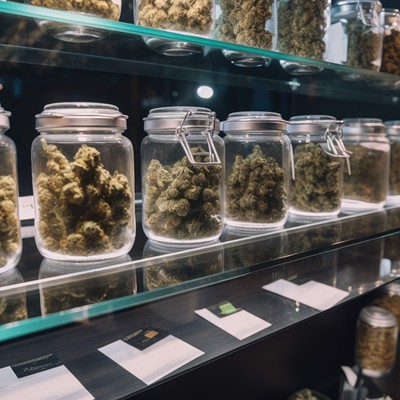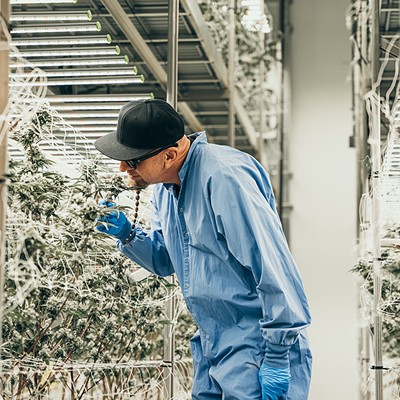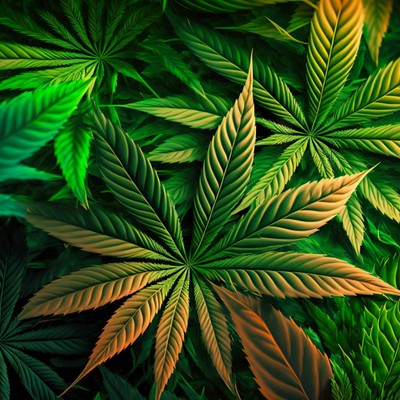The first time I wondered what was in my cannabis was in the late 1970s, when the U.S. government conspired with Mexico to use the herbicide Paraquat to destroy marijuana crops south of the border.
The governments sprayed the crops, then spread the rumor (later largely debunked) that any surviving Paraquat pot was unsafe to smoke. The program drew ire, and the vague health threats had folks across the nation asking pot dealers, "It isn't Mexican, is it? Because I don't want any Mexican. The feds are spraying that shit with POISON, man! Get me some Colombian." The program was short-lived and people quickly ceased worrying about what was in their cannabis. These days you don't have to wonder.
There are scientists who will tell you.
Az Med Testing in Tempe is the state's first cannabis testing lab and, to owner Steve Cottrell's knowledge, still the only one. The lab tests meds for both of Tucson's dispensaries and for caregivers and patients from all corners of the state. The cannabis lab is not a couch in a frat house populated by dim-eyed stoners sampling wares. It's a state-of-the-art science facility led by biochemist Brenda Perkins and staffed by consulting chemist Scott Burge, Ph.D.
Key equipment includes a highly technical-sounding Agilent 6890 network gas chromatograph and an Agilent 1200 high-pressure liquid chromatograph. Gas chromatography is used to test for THC, CBN and CBD—largely because those are the key medicinal molecules in cannabis. The liquid chromatograph tests edibles, Cottrell said.
The gas process takes about seven minutes, and the technicians have only a sample number—they don't know whose samples they are testing, which ensures objectivity.
First, a 1 gram sample is ground into a fine powder, then it's poured into a solution.
Then the cannabis solution is shaken, heated to 150 degrees in an ultrasonic bath, and shaken again. This ensures that all of the cannabinoids have been extracted into the solution. Next, a vial of the solution is put inside a glass tube and heated in an oven, suspending the cannabinoids in gas inside the tube, where they can be detected electronically.
Tucson's Green Halo, Southern Arizona Integrated Therapies and Tumbleweeds Health Center all list their test results. Patients tend to pay attention mostly to THC levels. In dispensaries here, I've seen a range from about 8 percent up to almost 20 percent. The highest Cottrell has seen through his lab is 26 percent—which isn't too far off the world record of about 27 percent, he said.
The liquid chromatograph tests for acids left behind, mainly in edibles, if cannabis isn't heated enough. More THC acid = less THC in your edibles. Ouch. The lab workers also test for mold by examining samples under a microscope. If they see spores, they can grow a culture to determine what kind of mold it is, but that's usually overkill. It's enough for most growers to know mold is there, Cottrell said.
So far, the lab can't tell you what strain you're smoking, but things are moving in that direction. Labs across the nation are collaborating to build a database of cannabinoid levels that might be used to differentiate sativa from indica or even identify specific strains.
Getting your meds to the lab is a bit of a pain right now, because the U.S. Postal Service, UPS and FedEx all prohibit cannabis shipping. But Az Med Testing has someone in Tucson about every two weeks, and that person will meet with you to hand over samples. Contact the lab to make arrangements. Tests cost $50 per sample, with a 10 percent discount for five or more.
For more information, go to AzMedTest.com.










